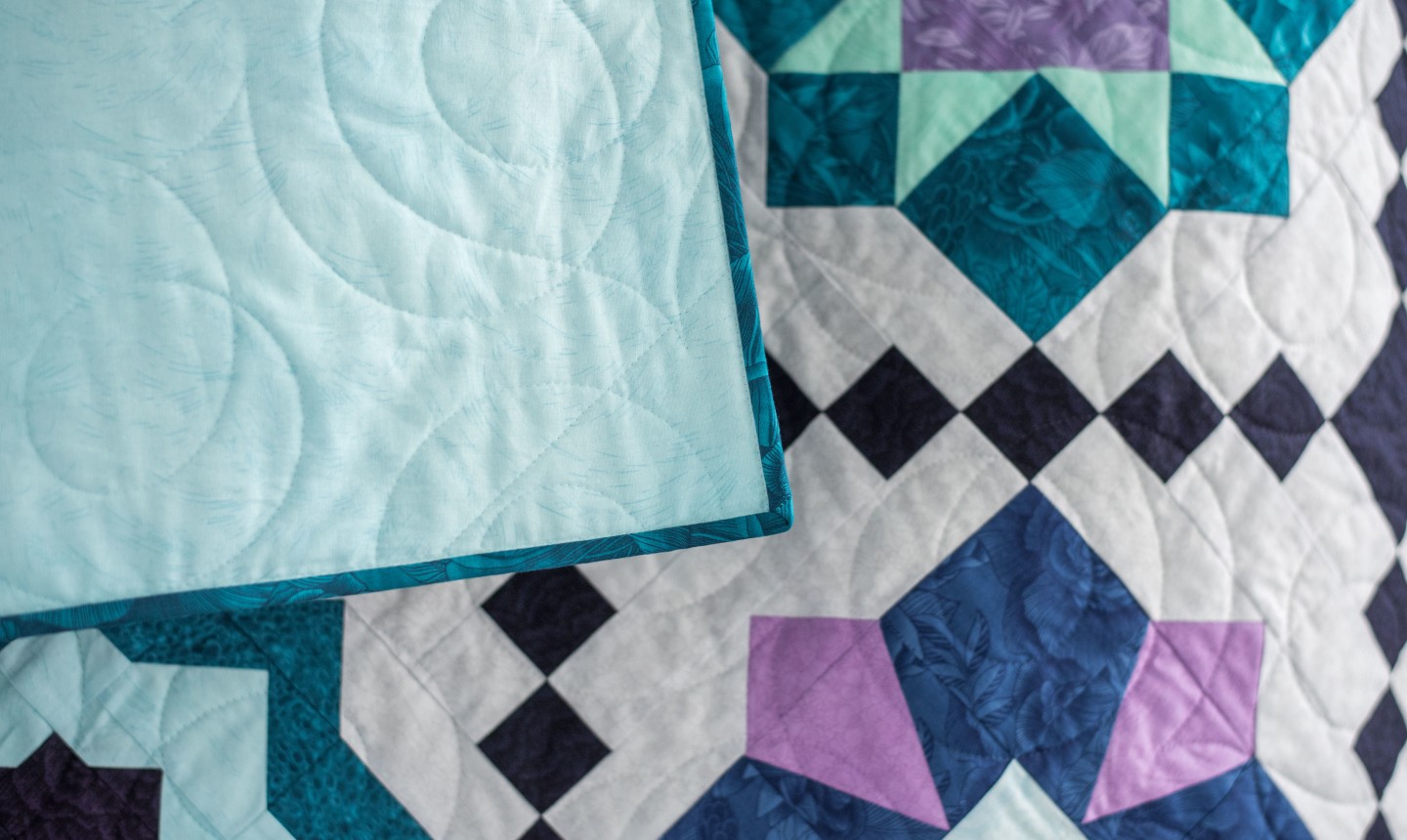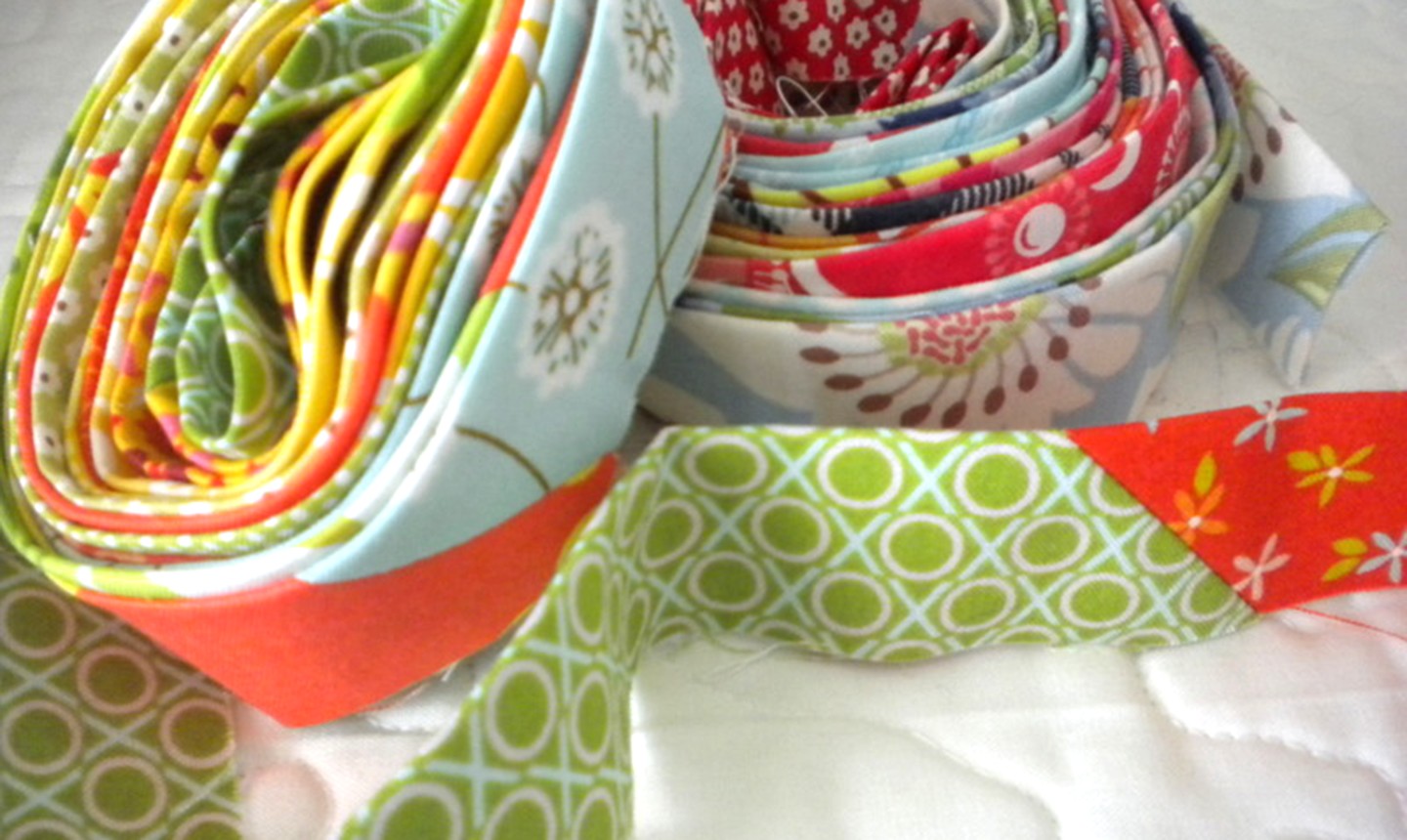
Truth: If you quilt, you need math. Calculating yardages for borders, backs and bindings is part of the craft, whether you're making the best use of the fabric you have or deciding how much to buy.
Most quilt patterns tell you how much yardage you need, but when sewing your own projects you'll need to do a few calculations of your own.
Borders
1. Measure your completed quilt center; the left and right borders will be cut to the length of the quilt center. For a 40"x50" quilt center, you'll need two pieces of fabric that are your width of choice by 50" long.
If you want 5" borders, for instance, cut three strips of fabric that are 5" wide by the width of your fabric. Piece with a diagonal seam, then cut two 50"-long pieces. Add your right and left borders to the quilt center.
2. Now measure the width of your quilt again to determine the length of the top and bottom borders. In this example, the quilt center measures 49"x50".
3. Add your top and bottom borders. Again, cut three strips that are 5" wide by the width of your fabric. Piece with a diagonal seam, then cut two 49"-long pieces.
After sewing these top and bottom border strips, your quilt will measure 49"x59". In total, you used six strips, each 5" wide by the width of your fabric. Since your strips are 5" wide, you used a total of 30" of fabric, or ⅞ yard.
With your borders added, you now have the measurements you'll need to figure yardage for your backing and binding.
Backings

For backings, you’ll need to remember to add 4" to each side measurement of your completed quilt top.
For the quilt in the example above, the backing should be 57"x67".
1. Cut two pieces of fabric that are 57" by the width of the fabric. Adding 57" and 57" gives you a total of 114", or 3¼ yards of fabric.
2. Sew the two 57"-long pieces together along the 57" side.
3. Trim the length to 67" after sewing this seam.
Bindings

1. For bindings made from width-of-fabric strips, add the measurements of all four sides of your quilt; then add 12" for seams, corners and finishing.
2. After you have your total measurement, divide by 42" to determine the number of strips you’ll need.
For example, if you have a finished 50"x60" lap quilt, you’ll calculate 50 + 50 + 60 + 60 + 12, to equal 232" of required binding. Six strips of fabric (6"x2½" equals 15" or ½ yard) will give you about 252" of sewn binding, leaving you with a small amount of leftover binding.
Note: For scrappy bindings, remember that because you're using so many seam allowances to join smaller strips of fabric, you'll need quite a bit extra. For diagonally pieced scrappy bindings, count on at least 4" of each strip being taken up in the seams. So if you are using 10" strips for your scrappy binding, only about 6" of each strip will count toward your finished length of binding.

I would like a copy of cheat sheet for borders, backings and binding Thank you
I would like the cheat sheet for borders, bindings, and backings
I would love the quilters cheat sheet, please. Linda(Hank)
Is this cheat sheet available to download? Thank you!
I would appreciate a copy of the cheat sheet for borders, backing & binding.
I would like a copy of cheat sheet for borders, backings and binding Thank you
I would like the cheat sheet please
I would like the Quilter's Cheat Sheet for measuring Borders, Backs and Bindings please and I thank you very much.
I would like the Quilters Cheat Sheet please. Thanks
I would like the cheat sheet please if its still available :)